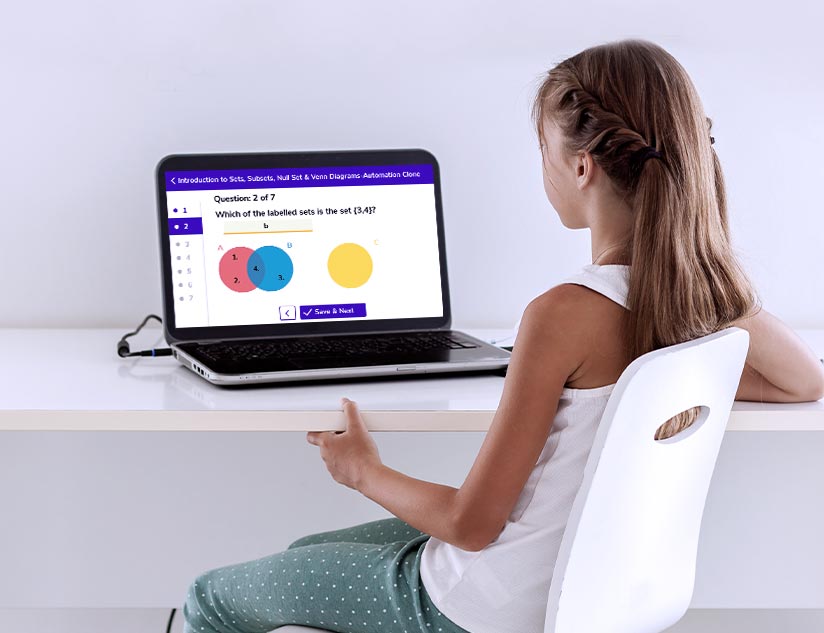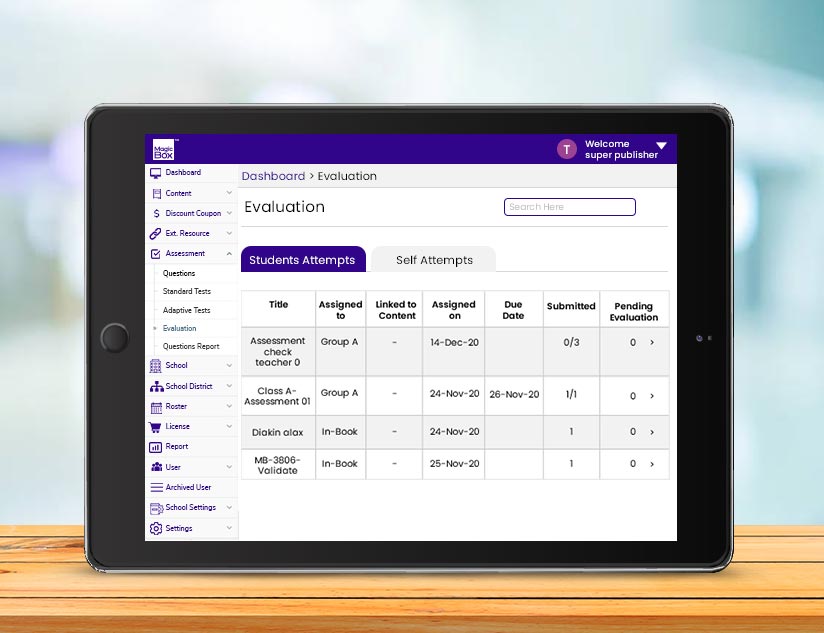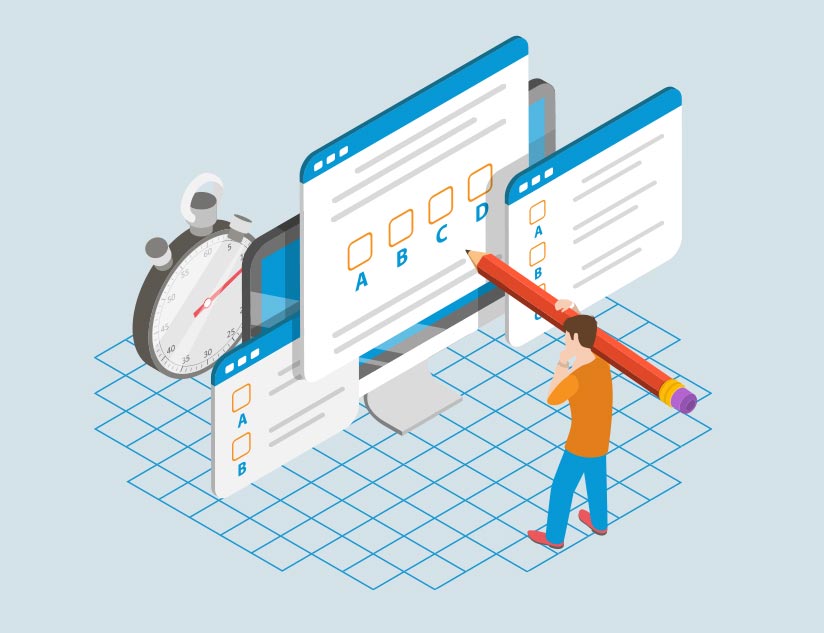How Education Technology Addresses the Challenges of K-12 Assessment
September 6th, 2021
The measurement of student learning is an important aspect of education. It offers useful feedback to both educators and students about the extent to which the course learning objectives have been met. It helps measure learning outcomes while making the teaching process more responsive. While educators can use it to make data-driven decisions and plan learning paths, students can use it to discover areas of strengths and weaknesses and reflect on how they need to improve.
The assessment system should be fair and strong for all this to occur. However, there are several challenges that need to be addressed for better assessments and outcomes.
Challenges in the Assessment Process
1. Issues with Grading
The performance of students is assessed on the basis of the class tests, exams, assignments, and projects conducted by educators. This grading system, however, faces challenges like:
- Students are not completely aware of the assessment process and grading technique.
- Lack of transparency in the assessment system.
- Rare use of classroom assessment techniques.
- Some degree of rigidity in the grading system.
- Teacher fatigue, bias, and human error.
2. Issues with Educators
Educators play a crucial role in the assessment of students’ performance. However, they sometimes get overburdened with administration tasks and need to quickly wrap up the syllabus. Also, their freedom and autonomy might be limited due to the constraints of the assessment system.
3. Lack of Access to Assessment Technology
Innovation and technology comes with its own set of challenges. Educators are still struggling due to the lack of training, which leads to problems in grading assessments, while students without reliable access to internet connectivity, could miss out on benefits of online assessments. Schools need the right EdTech tools and better technology infrastructure to allow asynchronous completion and grading of online assessments.
4. Limited Scope of Immediate Improvement
Although assessment results should be used for pedagogical improvements, it doesn’t work at times because the work of closing the loop in student learning is too slow. This is especially true of summative assessments. By the time the assessment results are disclosed, students have moved on to the next grade. This offers no opportunity to adjust one’s learning approach for better outcomes during the school year.
5. Massive Unused Data
With the increasing use of technology in assessment, there is a need to improve the quality of data and the sophistication of analyses to maximize the usefulness of assessment results. Technologies such as course management systems, AI, and adaptive learning platforms are giving access to large data sets with a wide range of variables, including individual assignment and problem grades, time spent on tasks, etc. This data should be used to develop more nuanced ways of learning and teaching.
Technology Offers the Solution
The COVID-19 pandemic disrupted several aspects of the education system. However, it also presented a unique opportunity to increase flexibility in grading practices and enrich assessment methods. The rapid increase in eLearning and adaptive learning approaches has allowed assessments to take place in real-time and could result in a shift to individualized instruction. While there still might be some issues with adapting to new technology, eLearning is paving the way for the future.
If educators embrace technology, they can effectively overcome existing challenges in assessments. Here are some ways this can actually work:
1. Focus More on Feedback, Less on Grades
More emphasis on grades than qualitative feedback has an adverse impact on the desire to learn. This common mistake encourages students simply to reproduce concepts and not learn them. That is why the grading quantities, like the extent to which students have completed assignments, should be replaced with constructive feedback that reflects their current achievement level.
Rubrics or similar scoring schemes tied to learning can be used to assess what students have learned after instruction. Formative assessments can be an effective way to improve learning rather than allotting grades at the completion of instruction. For instance, video assessments can be used to give personalized feedback for every student, using time-stamped video comments and text.
2. Greater Flexibility in Assessment Timing
For better learning outcomes, ungraded formative practice work can be used until students reach a desired level of achievement. Alternately, they can be allowed to choose formative work and practice as much or as little as they feel they need before being graded.
This flexibility in the collection of evidence for grading will help in better assessing students’ performance and give them the opportunity to improve. For instance, the i–NTNmath program was developed as an all-inclusive assessment program to quickly create, deploy, grade, and track assessments. It provides individualized, data-driven support to students for enhanced academic outcomes.
3. Formative Assessments for Ongoing Feedback
Immediate feedback is more effective for learning progress and motivation than delayed feedback, which finally comes when the student is moving on to the next grade. Students can be given a series of assignments and educators can replace a grade from a prior assessment of a learning goal with a newer grade for the same learning goal at each step. This will encourage a pattern of gradual improvement.
Formative assessments are more effective because they offer the opportunity for students to receive ongoing feedback, which helps them focus their efforts in the right direction. They are particularly helpful in enhancing student motivation as well as achievement. To reduce the workload, educators can rely on digital assessment platforms to deploy flexible assessments, based on students’ understanding and knowledge of the subject.
4. Grading Aids for Teachers
Scoring of objective, multiple-choice and fill in the blanks type questions are simplified with EdTech scoring tools. However, math and subjective, essay-type answers have been difficult to grade, bringing in the challenges of fatigue, bias and error mentioned earlier.
Technological advancements now offer solutions for such assessments as well. For instance, with GradeCam, teachers can scan paper-based answers to math assessments and have them automatically scored. On the other hand, machine learning-powered evaluation tools ease the grading of descriptive answers. With machine learning, teachers simply need to provide the ideal answers to each question. The tool then grades the answers, both qualitatively, in terms of grammar and language, as well as quantitatively, in terms of concepts discussed. Teachers need to simply review the grades and either approve them or alter them, based on their own judgement.
5. Introduce Adaptive Assessments
The one-size-fits-all method of assessment often results in poor academic performance. Adaptive assessments are artificial intelligence (AI) and machine learning (ML) based online tests that start with questions of medium difficulty. Based on the student’s responses, they adjust the difficulty level of the questions. Research indicates that such tests are more effective than fixed-form tests. They help in:
- Easy identification of learning zones
- Promoting focused learning
- Providing a more accurate assessment of the academic progress
- Fostering self-learning.
If educational institutions and educators want to commit to the assessment benefits, they need to understand that assessments should:
- Help educators improve student learning at each step
- Identify learning gaps and offer the chance to re-teach
- Challenge students with related, higher-level skills or tasks, and
- Prepare students to learn new skills.
Meaningful progress on student success will not happen overnight. It requires educators to foster culture, skill sets, and infrastructure to create a student-focused environment. Once the learning and assessment challenges are tackled the right way, significant positive academic results will ensue.














